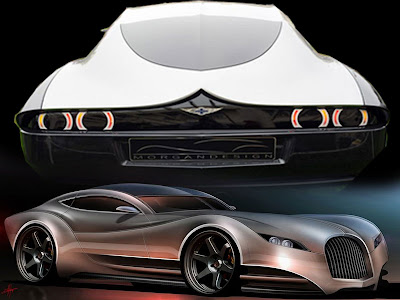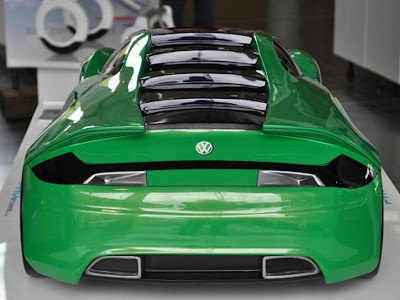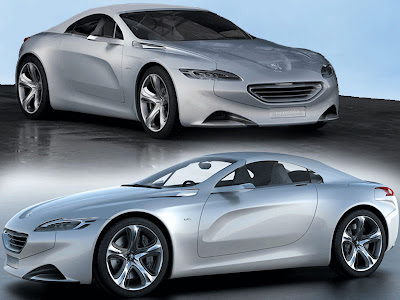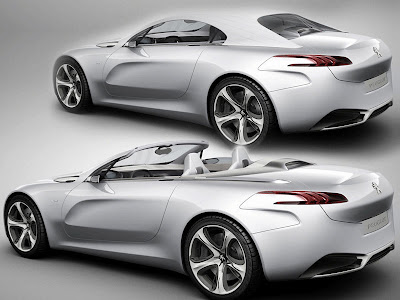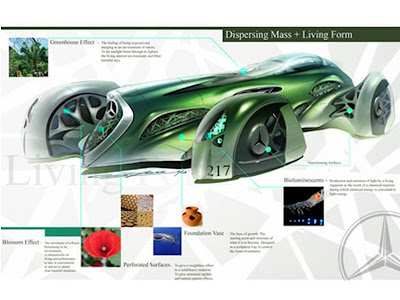
2010 Jaguar design team has created the Jaguar Luxury Sports Saloon XJ75 Platinum Concept. Jag's new limited-production coupe is joined by the one-off XJ75 Platinum concept created to honor of the brand's 75th anniversary. Pebble Beach Concours d'Elegance attendees will find it parked on the Concept Car Lawn this weekend.
 "The new Jaguar XJ Platinum Concept celebrates Jaguar's 75th Anniversary, and highlights the uniqueness of the XJ, and more broadly, the increasingly personal nature of luxury cars in today's market," said Mike O'Driscoll, Managing Director of Jaguar Cars.
"The new Jaguar XJ Platinum Concept celebrates Jaguar's 75th Anniversary, and highlights the uniqueness of the XJ, and more broadly, the increasingly personal nature of luxury cars in today's market," said Mike O'Driscoll, Managing Director of Jaguar Cars.
 "The XJ Luxury Sports Saloon is thoroughly modern, and captures the innovative and daring character that our founder Sir William Lyons built into every Jaguar. And the design team clearly had some fun making their first one-of-a-kind XJ design concept in that spirit."
"The XJ Luxury Sports Saloon is thoroughly modern, and captures the innovative and daring character that our founder Sir William Lyons built into every Jaguar. And the design team clearly had some fun making their first one-of-a-kind XJ design concept in that spirit."
 The XJ75 Luxury Sports Saloon Platinum Concept centre console houses a bespoke clock developed and designed in partnership with the Bremont Watch Company. An independent British company, Bremont creates beautifully engineered and designed mechanical watches hand assembled in Switzerland.
The XJ75 Luxury Sports Saloon Platinum Concept centre console houses a bespoke clock developed and designed in partnership with the Bremont Watch Company. An independent British company, Bremont creates beautifully engineered and designed mechanical watches hand assembled in Switzerland.
 "From a pure design perspective, the XJ75 Luxury Sports Saloon Platinum Concept is foremost about emphasising the striking proportion and presence of the new XJ, with a distilled black and white theme, which conjures up the sense of precious platinum," said Jaguar XJ Chief Designer Giles Taylor. "At the same time, the pure sporting character of XJ is brought to the fore by keeping the car's clean graphic approach and further lowering its stance.
"From a pure design perspective, the XJ75 Luxury Sports Saloon Platinum Concept is foremost about emphasising the striking proportion and presence of the new XJ, with a distilled black and white theme, which conjures up the sense of precious platinum," said Jaguar XJ Chief Designer Giles Taylor. "At the same time, the pure sporting character of XJ is brought to the fore by keeping the car's clean graphic approach and further lowering its stance.
 Dominated by striking white and black contrast precious metals platinum theme suggests, the Jaguar XJ75 Platinum Concept is a high-performance 470-hp supercharged engine 2011 Jaguar XJL with new ground-hugging front, rear and rocker panel is fitted.
Dominated by striking white and black contrast precious metals platinum theme suggests, the Jaguar XJ75 Platinum Concept is a high-performance 470-hp supercharged engine 2011 Jaguar XJL with new ground-hugging front, rear and rocker panel is fitted.
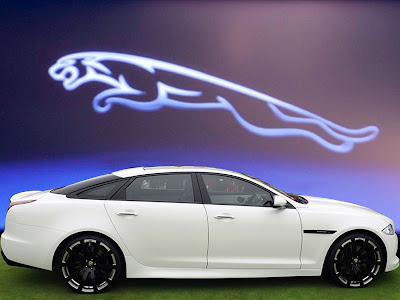
 This XJ75 Platinum Concept was designed to both celebrate the marque’s past and acknowledge the increasingly personal nature of today’s luxury cars.
This XJ75 Platinum Concept was designed to both celebrate the marque’s past and acknowledge the increasingly personal nature of today’s luxury cars.


Luxury Sports Saloon XJ75 Platinum Concept 2010 Jaguar Concept Car




Luxury Sports Saloon XJ75 Platinum Concept 2010 Jaguar Concept Car
Performance on the XJ75 Platinum Concept is derived from its 5.0-litre Supercharged direct-injection V8 with 470 horsepower and 424 lb.-ft of torque. Entertainment is provided by a 1,200-watt Bowers & Wilkins surround sound system with 20 speakers powered through 15 channels and state-of-the-art sound processing technology.


